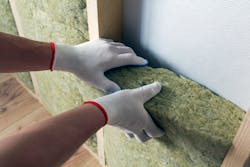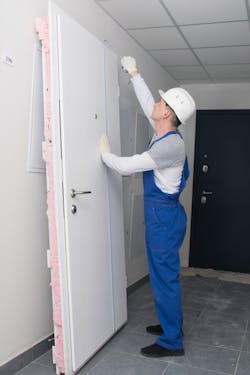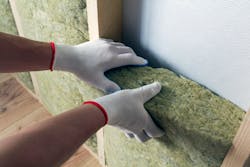Heating, ventilation and air conditioning contractors are important to the well-being of any community. The services they provide ensure that homes are comfortable, functional, and safe. But there's an often overlooked opportunity for contractors in areas of the country that provide HVAC contractors to expand their services and work with programs that offer year-round opportunities: state and utility-funded weatherization programs. In this article I will describe the many benefits of participating in these programs, from funding mechanisms to workforce allocation and how to acquire such a contract.
Funding and Workforce Allocation
State and utility-funded weatherization programs aim to make homes more energy-efficient, reducing utility bills and environmental impact. These programs are often funded by federal grants, state appropriations, or utility surcharges, creating a pool of resources that contractors can tap into. They are frequently referred to as low-income programs but that is often not the only reason customers can participate.
For contractors, the funding model usually works as a reimbursement or direct payment system. Once a contract is acquired within one of these programs, contractors perform the weatherization work and then submit the costs for reimbursement from the program. This minimizes the financial risk and allows forSkilled workers in HVAC already possess many of the technical skills needed for weatherization tasks.
When it comes to workforce allocation, these programs offer opportunities for both existing employees and new recruits. Skilled workers in HVAC already possess many of the technical skills needed for weatherization tasks many of which revolve around the appliance which consumes the most energy, the HVAC system. Programs often require additional certifications or training, which is typically offered by the program or utility. These programs can also be a great way to onboard new employees, providing them with practical experience in a subsidized environment.
In my experience, for contractors that are new to weatherization programs, it is invaluable to find someone with experience in the program, 5+ years, to help guide you. Hiring people who have experience working within these programs is also beneficial since they often have lengthy program manuals, with hundreds ofTypes of Weatherization Services
Participating in weatherization programs allows contractors to expand their service offerings, and skills into home performance work which continues to grow in popularity. Additional testing equipment may be required based on the program. In some programs, they require duct testing and sealing prior to a new HVAC system being installed. Some may identify duct replacement as a measure that is compensated for, and others may not. It is important to be aware of the program requirements and regulations. It is worth speaking with program supervisors or management to get a solid understanding of the program requirements and theirSome of the weatherization services performed may include:
● Door replacement: Installing energy-efficient doors that provide better insulation.
● Weatherstripping: Applying seals to gaps around doors and windows to prevent drafts.
● Insulation: Installing or upgrading insulation in walls, attics, and crawlspaces.
● Patching holes: Repairing holes in the building envelope to minimize energy loss.
● Installing LEDs: Replacing traditional light bulbs with energy-efficient LED bulbs.
● Smart thermostats: Installing programmable thermostats that optimize HVAC systems for energy savings.
These services not only make homes more energy-efficient but also create an ongoing relationship between the contractor and homeowner, and depending on program regulations may provide for potential future customers.
Acquiring a Contract
The most critical part of working within weatherization programs is acquiring a contract. Some program contracts may last for several years so it is important to find out where the program in your area is in its contract term and how to submit a bid when it becomes available again.
Some program contracts may last for several years so it is important to find out where the program in your area is in its contract term and how to submit a bid when it becomes available again.
Because these contracts may have requirements up front it is valuable to meet with the program leadership and identify any certifications that will be required in advance. You will also need to check on insurance, licensing, and other requirements for the program in your area.
Identifying Customers
Depending on the program structure and how it is implemented, some programs may provide you with customer information and request that you contact those customers and schedule appointments. Other programs may perform assessments in advance of any work being performed and provide you with jobs that are ready to be completed. Each program’s structure is different from state to state and utility to utility.
Program Ups & Downs
Any contractor who has previously worked with incentive or rebate programs understands that those programs come and go, sometimes leaving the contractor stranded without much of an explanation. The same is true for weatherization programs. While some may have longer contract cycles, 5 years or more, they may still be subject to changes. This can lead to a temporary reduction in the workforce while these changes are managed.
Conclusion
State and utility-funded weatherization programs present a lucrative opportunity for HVAC contractors. Not only do these programs offer financial incentives and a larger pool of potential customers, but they also allow contractors to diversify their services and contribute to environmental sustainability. By understanding the funding process, training employees for new skills, and marketing these services effectively, contractors can position themselves for sustained growth and success.
Aaron Husak is owner and CEO of Balanced Comfort in Fresno, California. Balanced Comfort specializes in HVAC, Plumbing, Weatherization, and RestorationFor more information, visit https://www.BalancedComfort.com or contact Aaron Husak at [email protected].
About the Author
Aaron Husak
owner CEO
Aaron Husak is owner and CEO of Balanced Comfort in Fresno, California. Balanced Comfort specializes in HVAC, Plumbing, Weatherization, and Restoration services. They have been on the Inc 5000 list 3 years in a row from 2021-2023 achieving the ranks of #817, #511 & #535 as well as being named a Best Place To Work two years in a row. Their diversification of services led to their rapid growth. Balanced Comfort is dedicated to serving its community in the Central California area.
For more information, visit https://www.BalancedComfort.com or contact Aaron Husak at [email protected]





